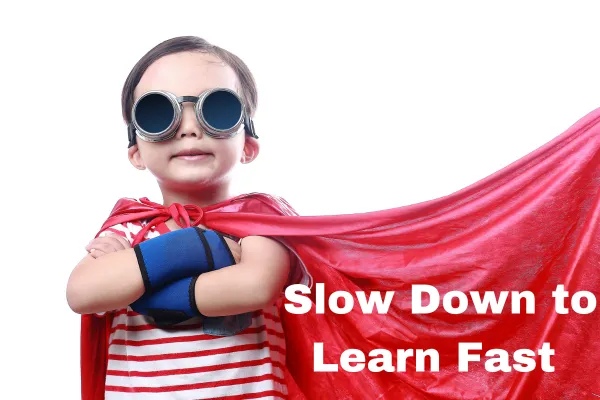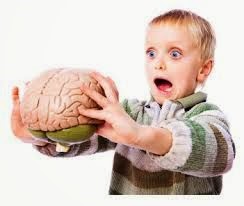Sensei Mike's Blog
Super Kids

Slow Down to Learn Fast
How Many Brains Do You Have?

Well, depending on your level of medical, physiological, psychological, or self-improvement knowledge, the answer can range from one to as many as seven, maybe more.
For our purposes (teaching physical skills in the form of Karate, mainly to children), the answer is two. Yes, two brains—not the left and right hemispheres. I'm talking about the conscious and subconscious (or unconscious) minds. ("Unconscious" in martial arts circles often involves a short nap right after a blow to the chin.)
Explaining the conscious and subconscious minds to junior school-aged children is a bit like herding cats. It can be done, but it’s tricky. However, I believe it’s an important concept.
As educators, we ask children to learn, remember, and recall behaviors or knowledge, whether it’s a specific movement pattern in martial arts or the accurate history of their country. But if we don’t explain the learning process, children can get frustrated, leading to low self-esteem and ineffective learning.
Here’s how I see it: when we learn something new, we use our conscious brain. We think, concentrate, and focus on connecting what we don’t know to what we do. This process uses up physical energy in the brain, feels like hard work, and is slow.
Eventually, if we concentrate, focus, and take the necessary time, we start to store the knowledge in our automatic storage device—our subconscious.
As adults, understanding how the conscious mind teaches the subconscious mind is something we can grasp. For children, it’s a bit trickier.
Explaining This to Children (Mat Chat)

I ask my students, "How many brains do you have?" I’ve had some strange answers, but in this context, I want the answer: two.
"The first brain is the human brain—the thinking, learning, slow, working-things-out brain. The second brain is the fast, automatic, takes-no-effort-or-energy-to-use 'computer' brain."
Now, let’s try something. Are you ready? Sure? Answer as quickly as you can... one plus one?
"Two!" In about a tenth of a second—that’s the computer brain. You know the answer without any effort, concentration, or focus.Now try this one... sixty-five times twelve. Um...
No answer from the computer, so you start using the human brain—slow, using up energy, and taking all your attention. Complex and confusing, right? (Okay, it’s 780, but who wants to do that off the top of their head?)
When you’re learning something new, you need to use the human brain to program the computer brain. And we all know how slow it can be to program a computer. It takes ages, and you have to be accurate, or the computer won’t do the right thing.
If you rush while programming a computer or skip steps, you get garbage in, garbage out. Learning is just the same.
Remember, to teach your computer brain to do what you want, you have to use your human brain. Go slow, get it right, and repeat it again and again.
Yes, it’s going to take energy, effort, and time at first. But once the computer brain has got it (with occasional refreshers), it will give you the answers (or movements) you want as easily as one plus one equals two.
So, take your time. Do things slowly, giving your human brain the chance to work things out properly. Then repeat and repeat again. Slowly, you’ll program your computer brain, and what you’ve learned will become easy and fast to do.
You’ve learned it!

A Final Thought
Kids who pick things up quickly are labeled bright and intelligent, while those who are slower get labeled as... well, slow. This unspoken agenda pushes kids to pick things up quickly to prove they’re bright. In karate schools, this means learning quickly and with dynamic energy, which is the opposite of what’s needed for effective learning.
Slow, focused, and precise use of the human brain is much more effective than trying to use it quickly and then relying on the computer brain, which may not have learned correctly. Slow learning may seem inefficient, but it’s much more effective in the long term.As "practice makes permanent" (not perfect), my plea is to get children to slow down. Allow them the time to think, process, and do movements correctly before increasing speed and dynamics.








